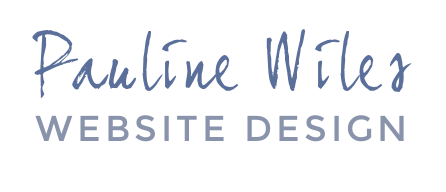What I Got Wrong in Indie With Ease
• this article contains affiliate links •
(Updated: January 2024)
What a lot can change in 6 years!
When I wrote the first draft of my author self-help guide, Indie With Ease, I was in full-time employment and definitely feeling the squeeze of trying to publish novels and still "have a life".
Fast forward to 2024, and I'm loving my career in which I design and build professional websites that get results for authors and solopreneurs with books.
I'm less happy, however, in knowing that what I wrote about author websites in Chapter 12 of Indie with Ease is no longer 100% sound advice.
In part, my thinking has evolved on what marketing should mean for authors. And in part (happily), technology has moved on, and new choices have emerged.
Here's a look at specific advice I’m now rethinking:
1. Your best bet is a self-hosted WordPress site >> NO.
This represents the biggest change in my thinking. Unless you like playing around with technology and have plenty of time to manage themes, widgets, plug-ins and more, WordPress is no longer the best choice for busy authors. If you have a healthy budget and want to blog, consider Squarespace. If you're at the other end of the budget spectrum, Carrd.co could be a fabulous choice for you. WordPress, does, however, enjoy huge market share, so don't be surprised if you chat to other authors and they don't even know there are alternatives. And keep in mind that many training courses on how to build a website just assume you'll use WordPress, with no consideration of other options.
See more on the drawbacks of WordPress.
How to choose between WordPress, Carrd, and Squarespace.
Thinking about migrating from WordPress to Squarespace? Here’s what to know.
How to evaluate advice you read online.
2. What goes on your book page
In Indie With Ease, I wrote, “A cover image, blurb, and some buy links are all that you need here.”
To that, I would now add:
Praise from readers. Either from beta readers, industry peers, or actual reviews. But definitely get some social proof on this page.
A lead magnet or reader magnet, to give your website visitor a reason to join your email list.
3. Where to put your email list sign up form
I now recommend that your email list sign up form is visible on every page. It doesn’t have to be obnoxious: put it in your footer, and also in some strategic locations too.
Related: should you put a popup on your author website?
While we’re on the subject of email lists, I passionately advise that you don’t put a button on your website that says sign up for my newsletter.
I will go to my grave repeating: Don’t call it an author newsletter!
And here's the advice in Indie With Ease that I still stand behind:
You may need to pay for help to get your website set up...
... But do aim to understand enough about your site that you can make basic edits yourself, without paying for every tiny change.
Keep your website clean, simple and attractive.
Don’t settle for a free domain name. You can buy your own “www” name for just $12 per year, or even less. And you can do it before you’re ready to publish a website. This is a no-brainer investment!
Get permission to gather email addresses.
Don't rely on social media to reach out to fans
But for goodness sake, don’t simply add everyone you know to your commercial email list. That’s not cool, and it’s illegal.
A small, simple site is a thousand times better than no site at all.
Add a blog only if you enjoy blogging and will update it regularly.
If you do choose WordPress, be ready to spend time updating it and keeping it secure.
I'm well aware there's nothing stopping me from publishing an updated edition of Indie With Ease. And I hope you'll forgive me when I say that is currently a long way down my to-do list. Hence this article. I hope it fills the gap!
As always, I'm happy to answer your questions on this topic, or to discuss your own custom website project.

